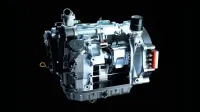Mazda development chief discusses future rotary platform

Mazda’s powertrain development chief, Ichiro Hirose discussed future rotary plans with the Australian Drive at the CX-30 crossover’s launch. Hirose told Australia’s Drive that Mazda is currently working with a very flexible and efficient rotary hybrid platform that doesn’t necessarily come with the heavy emissions and fuel consumption baggage the rotary engine has earlier been saddled with.
Hirose calls the rotary-based solution “XEV,” referring to its adaptability. “It has the generator function and also it can be used to provide the drive force to give you traction. […] Because the rotary engine is compact in terms of its packaging size [and] if we should choose to do so we can have the generator, rotary engine and electric motor all in one [driveline] because of the small packaging.”
The result is an electrified platform that could be made to work as a mild hybrid, series hybrid or a battery electric vehicle with a rotary range extender (if given a plug), depending of the required implementation. It’s as if Mazda had a slider to adjust the balance of using a rotary engine and using electric power, to make the platform more of a jack-of-all-trades. Hirose explained: “If you reduce the other way around it could be a pure battery-electric, using really the rotary engine as a range extender and, according to the balance, you can even provide something akin to the series hybrid that is providing the drive force. […] So, we are looking at a wider coverage and scope. Based on this architecture it allows us to do that, to explore the huge range of applications we can have with the rotary.”
The platform would also be flexible when it comes to meeting various stringent emissions standards. To be able to sell XEV-based vehicles globally would mean introducing a certain setup for one region and one for another, keeping in mind when the rotary power would kick in and how. While Hirose keeps the question open whether these vehicles would make it for sale in the United States, he says Mazda would be able to make them pass U.S regulations. “I’m just saying that — theoretically — if we were to introduce it in the U.S. we would be able to comply with the strictest of regulations.”
Earlier, Hirose has discussed the option of using the rotary as an emergency generator, or running it on LPG. It seems the compact dimensions and flexibility of the engine will be its saving grace. In the photo is an experimental hydrogen-powered Mazda rotary from 1991; almost 30 years later, Mazda appears to have ruled out using hydrogen.
Related Video:




